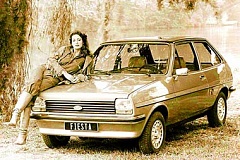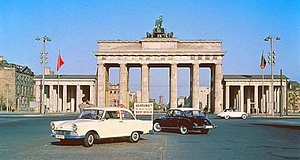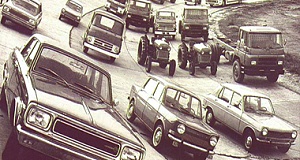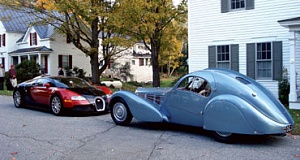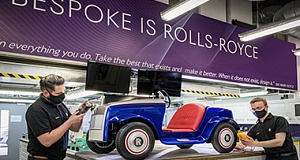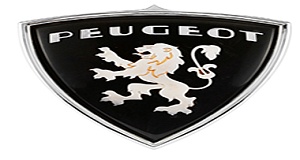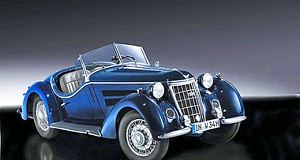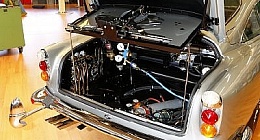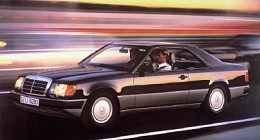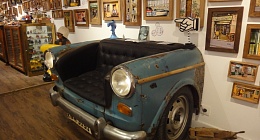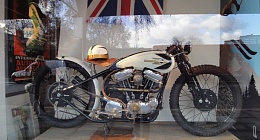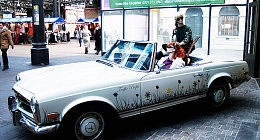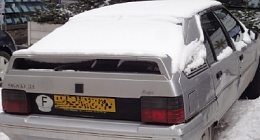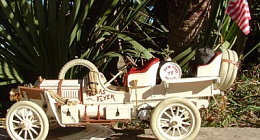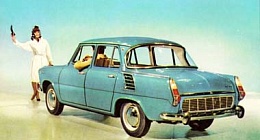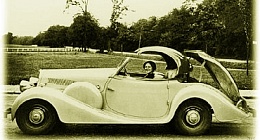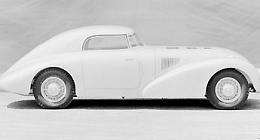La historia de todas las ruedas motrices de la compañía se inició en 1903, cuando Paul Daimler estableció las bases de esta tecnología con un diseño inicial. El primer vehículo con todas las ruedas motrices apareció en 1904, que fue rápidamente seguido por otros. Desde entonces, se demuestra que todas las ruedas motrices es la mejor tecnología en lo que respecta a la tracción y el progreso seguro. Durante décadas ha sido utilizado con éxito en todo tipo de vehículos Mercedes-Benz, tanto turismos y vehículos comerciales, como en camionetas o camiones pesados. Algunos de estos modelos, por ejemplo, la Clase G o el Unimog, han ganado reputación mundial, y se encuentran prácticamente en todos los países. La tracción total cada vez gana más adeptos por seguridad en el día a día utilizado en todo tipo de vías, demostrado con eficacia con la gama de turismos Mercedes-Benz 4MATIC .
The tradition of all-wheel-drive vehicles from Mercedes-Benz
· The foundations for all-wheel-drive technology are elaborated in 1903
· The 1907 ‘Dernburg’ vehicle makes its appearance - with all-wheel steering
· Today: wide range of models in all vehicle classes
Stuttgart – The first all-wheel-drive car for everyday use was built by Daimler-Motoren-Gesellschaft (DMG) in 1907. The ‘Dernburg-Wagen’ even featured all-wheel steering. It was named after the then Secretary of State of the Colonial Office, Bernhard Dernburg, who clocked up a high mileage in the vehicle in Africa in 1908.

The all-wheel-drive history of the company actually began slightly earlier, in 1903, when Paul Daimler laid the foundations for this technology with his first initial design. The first all-wheel-drive vehicle appeared in 1904; it was quickly followed by others. Since then, the watchword has been that all-wheel drive is the best technology when it comes to traction and safe, assured progress. Over the decades it has been successfully used in all kinds of Mercedes-Benz vehicles, both passenger cars and commercial vehicles, and from vans to heavy-duty trucks. Some of these models, for example the G-Class or the Unimog, have gained a legendary worldwide reputation, and are to be found virtually everywhere on earth. All-wheel drive also scores heavily in day-to-day driving on normal roads, however, as the Mercedes-Benz saloons with 4MATIC demonstrate.

All-wheel-drive vehicles by Daimler-Motoren-Gesellschaft
· The all-wheel-drive history of Daimler AG begins in 1903
· Commercial vehicles are the main beneficiaries of
all-wheel drive
· Experience with the first four-wheel drive commercial vehicles lead to the ‘Dernburg-Wagen’ in 1907
The all-wheel-drive history of Daimler AG began around the turn of the century. During his time as Technical Manager of the Austrian Daimler-Motoren-Gesellschaft in Vienna-Neustadt, Paul Daimler had already ‘produced the basis of a four-wheel-drive design in 1903,’ as the publication Illustrierte Zeitung reported in issue 3846 in 1917. As is often the case with technical developments, it was the military that provided the initial impetus. The first such vehicle to be designed was an all-wheel drive armoured reconnaissance vehicle, which was tested successfully in 1905 before being delivered to the Austrian army. Powered by an 8.5-litre, four-cylinder engine developing 50 hp (37 kW) at 1000 rpm, it had a ground clearance of 335 millimetres and an indicated climbing ability of 18 per cent.
1905/06 saw production of armoured vehicles with all-wheel drive. ‘The vehicles were equipped with a 30 hp engine, and as trials demonstrated, these were capable of overcoming considerable gradients, even over rough ground and when fully laden,’ wrote the Illustrierte Zeitung. ‘They are also capable of moving at considerable speed over different types of terrain.’ In addition to four-wheel drive, the vehicles were fitted with a cable winch to haul themselves over obstacles.

After these first vehicles, the Prussian army purchased two all-wheel-drive trucks from DMG for suitability trials in 1907. These were powered by a model F 6 six-cylinder engine developing 70 hp (51 kW) at 820 rpm from a displacement of 12.7 litres. These vehicles particularly proved their worth in comparison with rear-wheel-drive equivalents during a Berlin–Glatz–Berlin test run, and reports show that gradients or unfavourable road surfaces presented no problem. The claimed climbing ability was 25 per cent unladen and 12 per cent with two trailers. The iron wheels (with wooden spokes) tended to distort after prolonged use, however. Despite these predominantly positive results these early all-wheel-drive vehicles did not remain with the military, probably because the amy authorities were still wedded to horse-drawn wagons; the two trucks were sold to Krupp AG. But in subsequent years all-wheel-drive vehicles for special purposes became gradually established with the military in the form of tractor units, dropsiders or ambulances.

On the basis of this know-how, DMG built the ‘Dernburg’ in 1907, an all-wheel-drive car with all-wheel steering. Commercial vehicles with four driven wheels were also produced for use in the colonies. There was a tractor unit destined for Portuguese South Africa in 1908, for example, which possessed an extremely good climbing ability of 45 per cent when unladen, and still managed 20 per cent when laden.









